-
Roku Streaming Stick
Here is another1 example of modern engineering excellence. Looks great from the outside but not so much from the inside.
(1 Samsung Dishwasher: Looks nice, but has an astonishing accuracy to start failing past the end of the warranty. A great marvel of Korean engineering.)See for yourself:

Once the stick is powered up, you have to wait several minutes until you get a response. Instantly pressing a button on the control when the start screen is coming up makes the device unresponsive. Very annoying.
Bonus: You get nice different themes during start.
Or: Switch sub titles on/off. Great solution presented here too. Once you decide to change sub titles in the middle of the presentation, you have to go back to the main menu and start all over.
After a few weeks of use, I discovered that the batteries were empty. Replaced then and didn't gave this a thought, until a few weeks later the batteries were empty again. It was not obvious that the batteries were empty since the device does not respond instantly anyway but a quick check with the multi meter confirmed it.
When did you replaced the last time the batteries of your remote?
I contacted Roku support about all this along with the confirmation that I did all the steps the FAQ suggests, only to get an answer one week later to go and check the FAQ. Report ticket was automatically closed. How convenient.Checked the remote for power consumption:
Almost 12mA current is drawn constantly. No key is pressed!
I'm surprised the batteries made it that long.
Compared this to my WD Media Player remote:and 0mA, the way a remote should work.
Checked the Roku remote control inside, but decided not to waste any more time.
And here is my solution:Hi,
You received this email because you requested to close your account, we have removed your information from our system.
Thanks for using Roku!
Roku
-
3D RoundView
3D RoundView is a panoramic viewer for a modern Browser.
Click and drag to move the view, click inside the screen to drag the current selection or click one of the preview spheres to change the current view for the 25 cats on the bleachers. Double click for the single view.
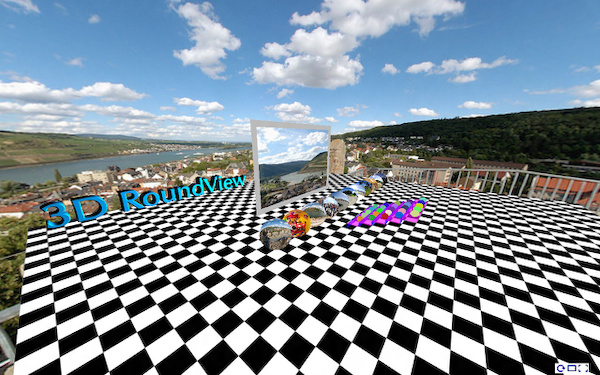

To get started:
Add the following scripts
<script type="text/javascript" src="https://bitfabrik.io/3DRoundView/js/three.min.js"></script> <script type="text/javascript" src="https://bitfabrik.io/3DRoundView/js/KeyboardState.js"></script> <script type="text/javascript" src="https://bitfabrik.io/3DRoundView/js/CSS3DRenderer.js"></script> <script type="text/javascript" src="https://bitfabrik.io/3DRoundView/js/font.js"></script>Add the panorama div tag that will contain the panorama:
<div id="panorama"> <div id="reset"> <img alt="Reset" title="Reset (R)" src="https://bitfabrik.io/3DRoundView/img/reset.png" /></div> <div id="vollbild"> <img alt="Fullscreen" title="Fullscreen" src="https://bitfabrik.io/3DRoundView/img/vollbild.png" /></div> <div id="singleView"> <img alt="Single View" title="Single View (S)" src="https://bitfabrik.io/3DRoundView/img/singleView.png" /></div> </div>Set the panorama list:
<script type="text/javascript"> var panoramaFiles = ['myPanorama1.jpg', 'myPanorama2.jpg']; var floorTextureImg = 'floorTexture.jpg'; var movieScreenClr = 0xbbbbbb; </script>followed by the 3D-RoundView script
<script type="text/javascript" src="https://bitfabrik.io/3DRoundView/js/3dRoundView.js"></script>For a more simplified step:
Download cPicture for your language, select your panorama pictures and use the function to create a panorama website. This will add all the project files to a selected folder which can be copied to your webserver to publish the panorama.


Examples:
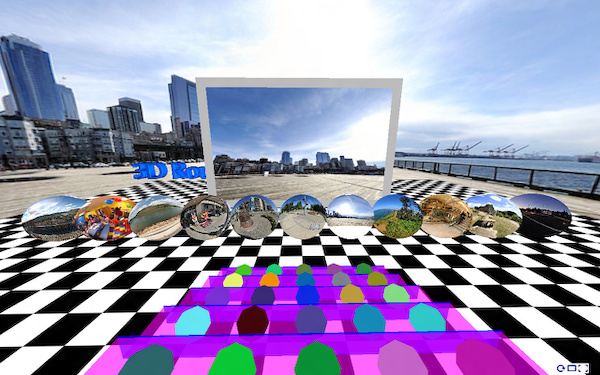
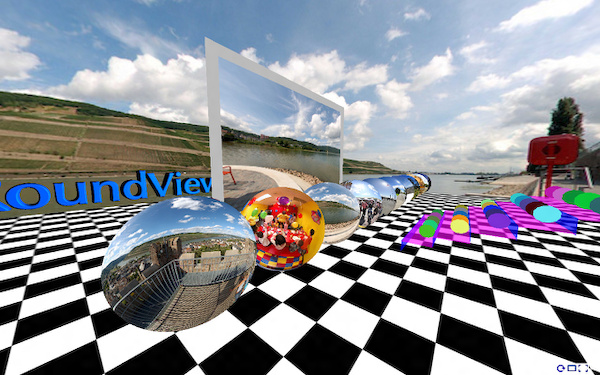

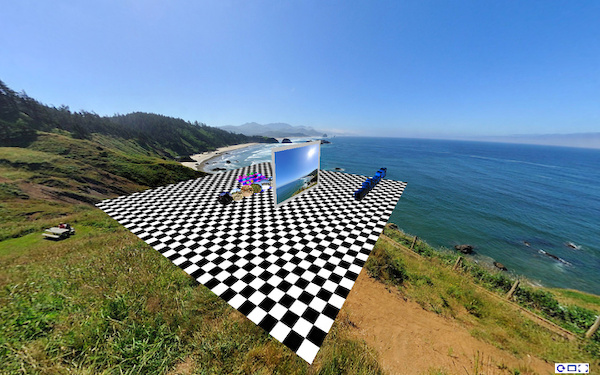
-
Perfectly Square
How to make a rectangular object perfectly square using PTGui:
The frame is straight, but somehow the photo looks distorted.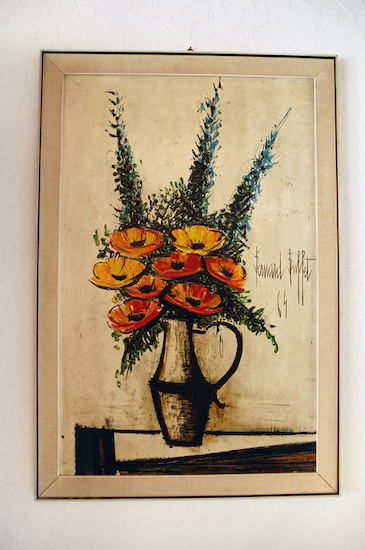
The camera (film/sensor) was not exactly parallel to the object during the exposure and resulted in a slightly skewed frame along with some distortions (bowed lines) caused by the lens:
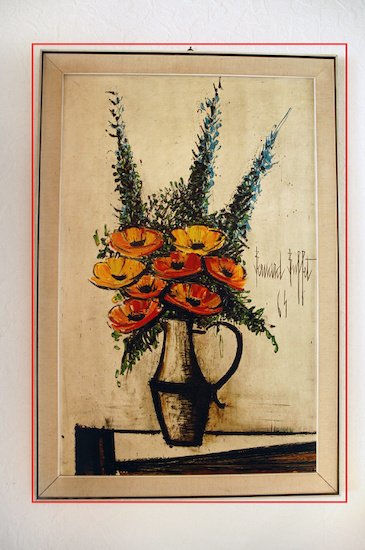
This can easily be fixed with the panotools: start with vertical and horizontal control points. For this I'm using the PTGui software. Note: by default t1 points (vertical line) are selected. Change horizontal control points to the t2 type.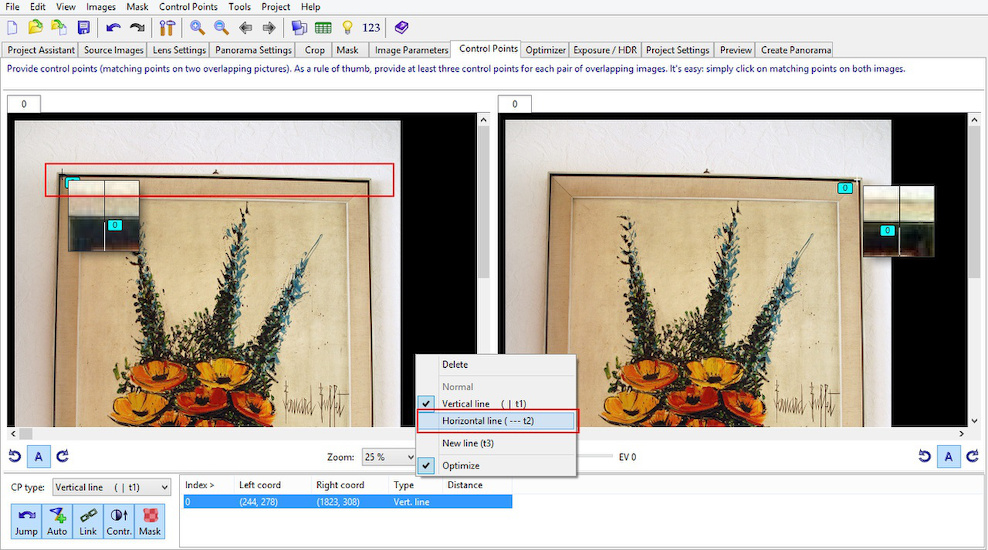
It is important to align vertical and horizontal control points not only at the corner points but also in the middle of the sides. Any camera lens has a distortion and lines are not straight. Using the middle points will fix those bows too.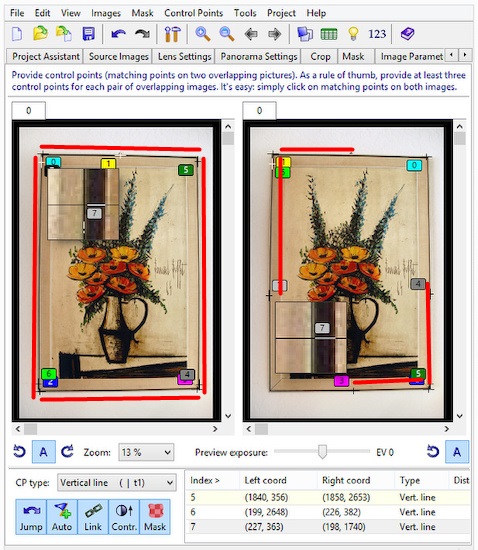
Make sure the lens type is rectilinear: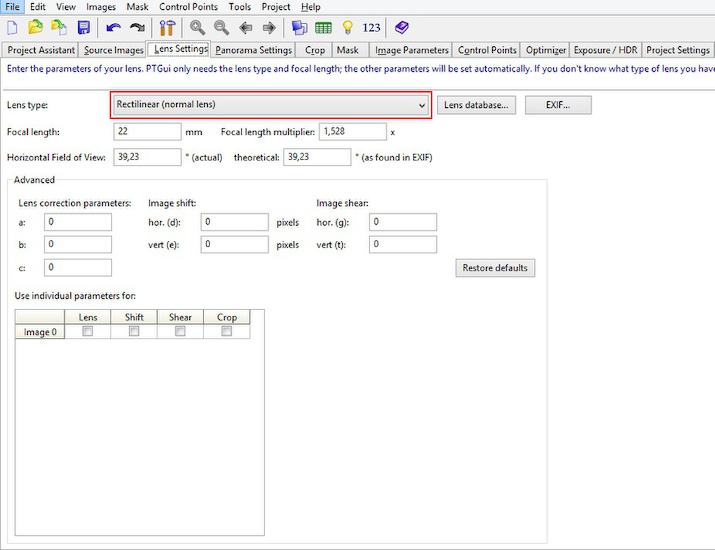
And the projection is set to rectilinear:
Select Raw, Pitch and Roll and run the first optimization. It is important not to select all variables at once: optimization is finding a low spot in a multidimensional field and optimizing for Raw, Pitch and Roll first you make sure not to optimize on a local spot in a wrong location.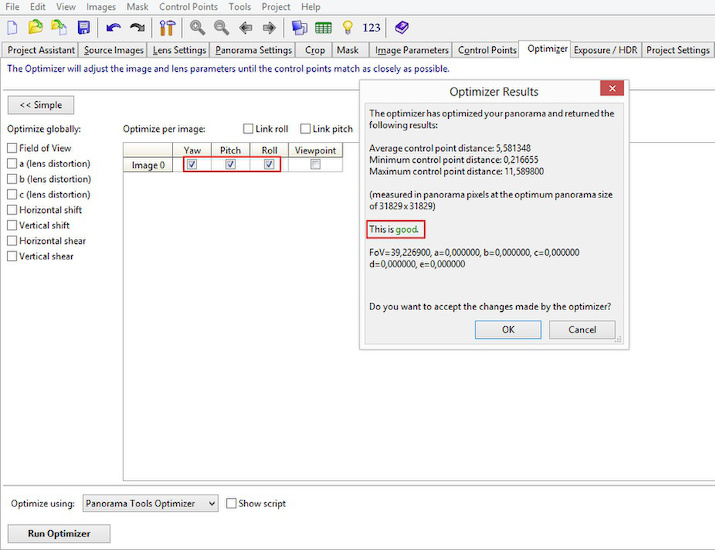
The first result looks good and corners are aligned correctly. Now we fix the bowed lines.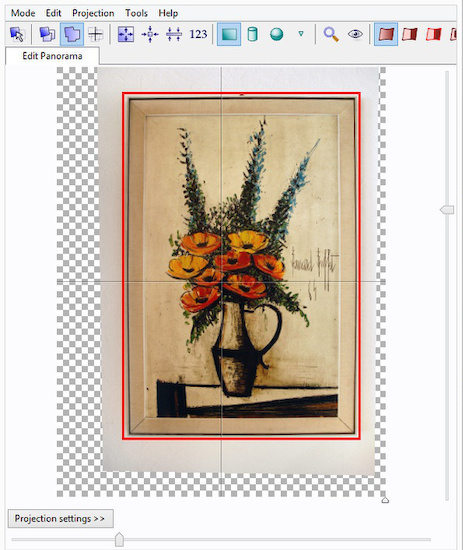
Add the Field of View, b and vert/horz shift. Do not use a, b and c altogether. Just the b parameter is perfectly suited for the non-wavy camera lens distortions. The optimizer can now calculate the exact parameter values:
The object is now straitened: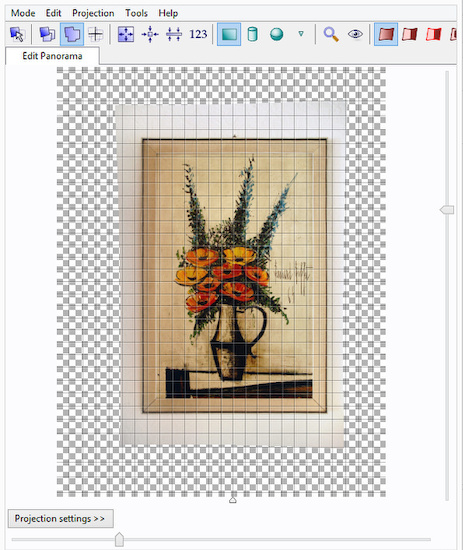
The panotools take all the calculated parameters and create the final output image:
Perfectly square:
-
G0602 gears - more with Powershell
A practical exercise with PowerShell.
6 gears with 2 gears of a set of 10 available gears make up the ratio for cutting metric and imperial threads using a G0602 metal lathe.
The gear labels suggest only 24 metric and 29 imperial combinations, but 526 unique combinations from 0,25mm/101,6tpi up to 3,47tpi/7,3169mm are possible.
Gears
The spindle gear at the top all the way down to the leadscrew gear at the bottom:
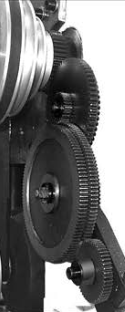
The leadscrew gear
The leadscrew gear allows 9 different ratios:

Imperial gear label

Metric gear label

The script
This PowerShell script creates all gear combinations and outputs the result in a CSV and TXT file. The CSV contains also all duplicate combinations possible with the different gear ratios.
First all gears combinations are created from a one-dimensional array into a two-dimensional array. The ratios of all gear combinations are connected to the 9 leadscrew ratios. The a and b gear are swapped in the inner loop.
The result is stored in one of PowerShells best inventions: the PSCustomObject. The result of the calculation is a list of PSCustomObjects which can be send directly to a CSV or formatted to a TXT file.The lead screw has 12 threads per Inch. The conversion from Inch to metric is done by connecting the 'b' gear to the 120 gear instead of the 127 gear.
2 * 127 = 254 -> 1 Inch = 25.4 mm
With the leadscrew gears (III,ABC), the main ratio is a/b IIIABC. For metric it is 4/3 ratio and 18 / ratio for imperial.
For each of the values, the matching metric/imperial value is added in brackets. The conversion is rather simple: Metric = 25.4mmtpi / Imperial and *Imperial = 25.4tpimm / Metric**
# available gears $z = @(27, 32, 36, 40, 44, 45, 48, 52, 56, 60) $ab = $null # create all gear combinations for ([int]$u = 0; $u -lt $z.length; $u++) { for ([int]$v = $u+1; $v -lt $z.length; $v++) { $ab += ,($z[$u], $z[$v]) } } # leadscrew gear ratio $ABC = @((1,'A'),(2,'B'),(0.5,'C')) $III = @((1,'I'),((5/6),'II'),((7/6),'III')) $t = foreach ($_ab in $ab) { foreach ($_A in $ABC) { foreach ($_I in $III) { # and swap gear for ([int]$ab_index = 0; $ab_index -lt 2; $ab_index++) { $a = $_ab[$ab_index] $b = $_ab[1-$ab_index] $r = $_I[0] * $_A[0] * $a / $b $mm = $r * 4 / 3 $tpi = 18 / $r [PSCustomObject]@{ 'a' = $a 'b' = $b 'III' = $_I[1] 'ABC' = $_A[1] 'mm' = $mm 'tpi' = $tpi } } } } } # export to CSV $t | Export-Csv -NoTypeInformation -Delimiter ";" -Encoding UTF8 -Path g0602.csv # sort for threadsize and write to a text file $list = $t | sort -Property mm -Unique | % { (" {0}-{1} {2,-3} {3} = {4:0.####}mm ({5:0.##}tpi) {6:0.##}tpi ({7:0.####}mm) " -f $_.a, $_.b, $_.III, $_.ABC, $_.mm, (25.4 / $_.mm), $_.tpi, (25.4 / $_.tpi)) } $list | Out-File g0602.txt $list "{0} Einträge" -f $list.Count
Most combinations are fractional. Here is a filtered metric list (24 entries):
$list_mm = $t | sort -Property mm -Unique | ? { (20*$_.mm - [int](20*$_.mm)) -eq 0 } | % { (" {0}-{1} {2,-3} {3} = {4:0.####}mm ({5:0.##}tpi) " -f $_.a, $_.b, $_.III, $_.ABC, $_.mm, (25.4 / $_.mm), $_.tpi, (25.4 / $_.tpi)) } 27-60 II C = 0,25mm (101,6tpi) 27-60 I C = 0,3mm (84,67tpi) 27-40 I C = 0,45mm (56,44tpi) 36-40 II C = 0,5mm (50,8tpi) 27-60 I A = 0,6mm (42,33tpi) 45-40 I C = 0,75mm (33,87tpi) 27-40 I A = 0,9mm (28,22tpi) 27-36 I A = 1mm (25,4tpi) 27-40 III A = 1,05mm (24,19tpi) 27-60 I B = 1,2mm (21,17tpi) 36-32 II A = 1,25mm (20,32tpi) 27-48 I B = 1,5mm (16,93tpi) 36-32 III A = 1,75mm (14,51tpi) 27-40 I B = 1,8mm (14,11tpi) 36-48 I B = 2mm (12,7tpi) 27-40 III B = 2,1mm (12,1tpi) 27-32 I B = 2,25mm (11,29tpi) 36-40 I B = 2,4mm (10,58tpi) 45-56 III B = 2,5mm (10,16tpi) 36-32 I B = 3mm (8,47tpi) 36-32 III B = 3,5mm (7,26tpi) 45-32 I B = 3,75mm (6,77tpi) 48-32 I B = 4mm (6,35tpi) 60-32 I B = 5mm (5,08tpi)
Filtered imperial list (56 entries):$list_tpi = $t | sort -Property mm -Unique | ? { (2*$_.tpi - [int](2*$_.tpi)) -eq 0 } | % { (" {0}-{1} {2,-3} {3} = {6:0.##}tpi ({7:0.####}mm) " -f $_.a, $_.b, $_.III, $_.ABC, $_.mm, (25.4 / $_.mm), $_.tpi, (25.4 / $_.tpi)) } 27-60 II C = 96tpi (0,2646mm) 32-60 II C = 81tpi (0,3136mm) 27-60 I C = 80tpi (0,3175mm) 36-60 II C = 72tpi (0,3528mm) 32-60 I C = 67,5tpi (0,3763mm) 27-40 II C = 64tpi (0,3969mm) 27-56 III C = 64tpi (0,3969mm) 32-56 I C = 63tpi (0,4032mm) 36-60 I C = 60tpi (0,4233mm) 32-52 I C = 58,5tpi (0,4342mm) 36-56 I C = 56tpi (0,4536mm) 36-45 II C = 54tpi (0,4704mm) 32-56 III C = 54tpi (0,4704mm) 36-52 I C = 52tpi (0,4885mm) 32-44 I C = 49,5tpi (0,5131mm) 36-40 II C = 48tpi (0,5292mm) 32-40 I C = 45tpi (0,5644mm) 36-44 I C = 44tpi (0,5773mm) 48-56 I C = 42tpi (0,6048mm) 48-45 II C = 40,5tpi (0,6272mm) 32-60 II A = 40,5tpi (0,6272mm) 27-60 I A = 40tpi (0,635mm) 48-52 I C = 39tpi (0,6513mm) 48-56 III C = 36tpi (0,7056mm) 48-44 I C = 33tpi (0,7697mm) 45-40 I C = 32tpi (0,7938mm) 27-56 III A = 32tpi (0,7938mm) 32-56 I A = 31,5tpi (0,8063mm) 48-40 I C = 30tpi (0,8467mm) 36-56 I A = 28tpi (0,9071mm) 60-45 I C = 27tpi (0,9407mm) 32-56 III A = 27tpi (0,9407mm) 36-52 I A = 26tpi (0,9769mm) 27-36 I A = 24tpi (1,0583mm) 32-40 I A = 22,5tpi (1,1289mm) 36-44 I A = 22tpi (1,1545mm) 48-56 I A = 21tpi (1,2095mm) 27-60 I B = 20tpi (1,27mm) 48-52 I A = 19,5tpi (1,3026mm) 27-45 II B = 18tpi (1,4111mm) 48-44 I A = 16,5tpi (1,5394mm) 27-48 I B = 16tpi (1,5875mm) 27-56 III B = 16tpi (1,5875mm) 36-60 I B = 15tpi (1,6933mm) 36-56 I B = 14tpi (1,8143mm) 48-36 I A = 13,5tpi (1,8815mm) 32-56 III B = 13,5tpi (1,8815mm) 36-52 I B = 13tpi (1,9538mm) 36-48 I B = 12tpi (2,1167mm) 36-44 I B = 11tpi (2,3091mm) 48-56 I B = 10,5tpi (2,419mm) 36-40 I B = 10tpi (2,54mm) 48-56 III B = 9tpi (2,8222mm) 36-32 I B = 8tpi (3,175mm) 48-40 I B = 7,5tpi (3,3867mm) 48-32 I B = 6tpi (4,2333mm)
All 526 entries as a text file sorted by size.
The metric column is the size with the 'b' gear connected to the 120.
The imperial column is the size with the 'b' gear connected to the 127.'a'-'b' leadscrew gear = metric column imperial column 27-60 II C = 0,25mm (101,6tpi) 96tpi (0,2646mm) 27-56 II C = 0,2679mm (94,83tpi) 89,6tpi (0,2835mm) 27-52 II C = 0,2885mm (88,05tpi) 83,2tpi (0,3053mm) 32-60 II C = 0,2963mm (85,73tpi) 81tpi (0,3136mm) 27-60 I C = 0,3mm (84,67tpi) 80tpi (0,3175mm) 27-48 II C = 0,3125mm (81,28tpi) 76,8tpi (0,3307mm) : : 60-27 II B = 4,9383mm (5,14tpi) 4,86tpi (5,2263mm) 60-32 I B = 5mm (5,08tpi) 4,8tpi (5,2917mm) 52-32 III B = 5,0556mm (5,02tpi) 4,75tpi (5,3505mm) 44-27 III B = 5,07mm (5,01tpi) 4,73tpi (5,3657mm) 52-27 I B = 5,1358mm (4,95tpi) 4,67tpi (5,4354mm) 45-27 III B = 5,1852mm (4,9tpi) 4,63tpi (5,4877mm) 56-32 III B = 5,4444mm (4,67tpi) 4,41tpi (5,762mm) 56-27 I B = 5,5309mm (4,59tpi) 4,34tpi (5,8535mm) 60-32 III B = 5,8333mm (4,35tpi) 4,11tpi (6,1736mm) 60-27 I B = 5,9259mm (4,29tpi) 4,05tpi (6,2716mm) 52-27 III B = 5,9918mm (4,24tpi) 4,01tpi (6,3413mm) 56-27 III B = 6,4527mm (3,94tpi) 3,72tpi (6,8291mm) 60-27 III B = 6,9136mm (3,67tpi) 3,47tpi (7,3169mm) -
Encrypt your data
Sending data over the Internet is not safe. A safe connections takes effort and resources.
If you manage to get your mail send via encryption, you forgot the National Security Agencies (in short NSA) that have access to the mail servers and scan your data before its gets send encrypted over the Internet. Move your data up to an online storage leaves them in a container that is not yours alone.But if you encrypt and decrypt data on your computer first with a strong 256bit encryption key, you can leave any security agency in the dark.
These Windows Powershell script functions makes it easy to encrypt and decrypt your files.
Since it is a symmetrical cipher, the same password is used for encryption and decryption.
If you need to pass your large secure data to another receiver, pass on the script with the new secret password and sentences using an unsymmetrical cipher or an alternative transport (mail / USB stick). The reward is a secure data transmission.For example encrypt a file with the script:
Encrypt-File "C:\data\mydata.zip"Send this encrypted file to an online storage or send via mail.
Receive the file and decrypt with the same script password:Decrypt-File "C:\download\mydata.zip"
If you intent to encrypt/decrypt pictures, you can use the script plugins in cPicture.Download
Encrypt-Decrypt Script
(remove the trailing .txt from the file once it is downloaded)Note
Change the secret phrases and password in the script.
Select the script function you want to use at the bottom of the script or add the script to an existing upload/download process.